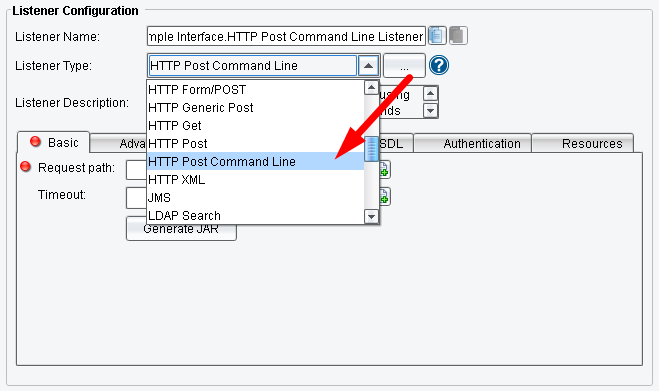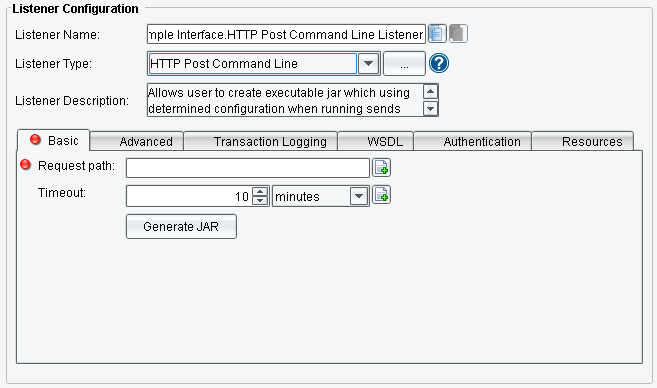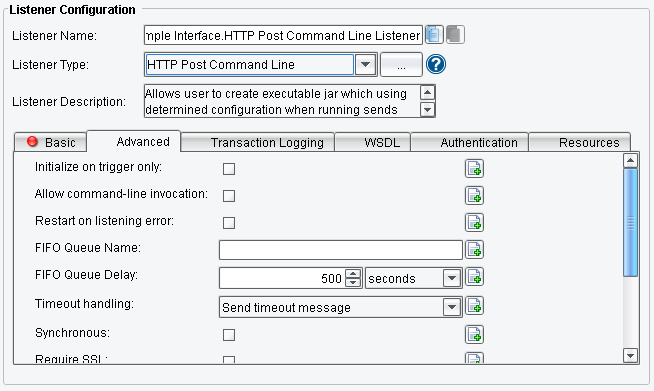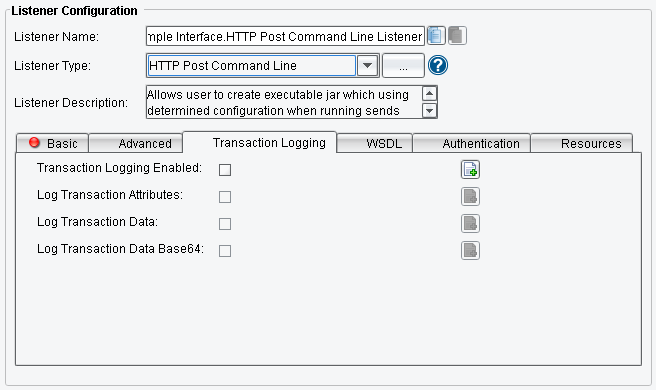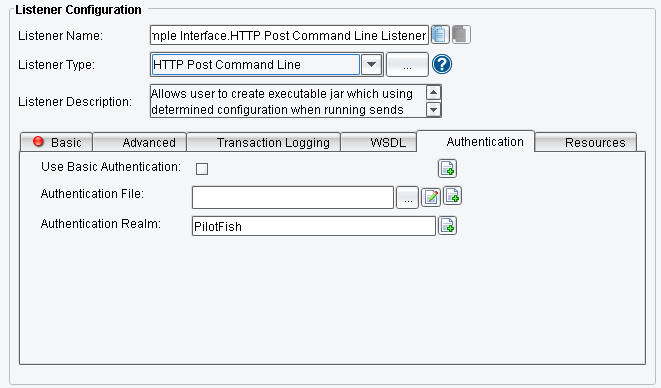HTTP Post Command Line Listener
This Listener is similar to an HTTP Post. It can be invoked by a simple command line application.
1. Basic: The Request Path specifies the additional information after the standard URL that the eiConsole will use to determine if the information coming inbound should be sent through this particular interface. For a synchronous HTTP Post, you can specify a timeout in milliseconds.
The Generate JAR button generates an executable JAR file that can be used to send information to this interface. After clicking this button, you will see the following box:
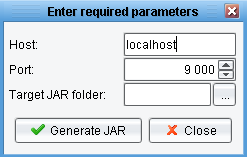
The Host describes where it will be when deployed. The Port specifies the port on which the eiConsole is deployed. You can also select a JAR location where the JAR should be output.

2. Advanced: At the Advanced tab, you can specify:
Initialize on trigger only: If enabled, Listener doesn’t start up until a trigger initializes it.
Allow command-line invocation: If enabled, Listener can be invoked using the CLI client application.
Restart on listening error: If enabled, the Listener will be restarted after an error occurs.
FIFO Queue Name: The FIFO stuff enables a “First In, First Out” queuing mechanism between Listeners and Transports. If a “FIFO Queue Name” is provided, that name will be used as a key for a queue Transactions & will be pushed into before reaching a transport. They’ll be ordered in this queue according to when the Listener created them.
FIFO Queue Delay: It is the interval between updates/checks against that queue. Providing a queue name guarantees that a given Transport sends transactions in the same order the Listener created them in.
Timeout handling: It can be – Send timeout message, Return original request or Throw listener exception.
Synchronous: Specifies whether or not a response is expected.
Require SSL: If selected, plain text requests will be rejected.
HTTP Headers: Allows specification of HTTP header name-value pairs to use in synchronous response.
3. Transaction Logging – This tab allows us to enable transaction events logging. That data can be logged by a TransactionEventListener.
The Transaction Logging Enable checkbox allows transaction events originating from this listener to be logged by a TransactionEventListener.
Log Transaction Attribute – if enabled, logs transaction attributes.
Log Transaction Data – if enabled, logs transaction data body.
Log Transaction Data Base64 – if enabled, logs transaction data body as Base64.
4. WSDL: In the WSDL tab you can specify:
WSDL file: WSDL file that would be returned on request that ends with “?wsdl”. If you want to create new or edit existing files, you can click Edit/New to open the WSDL editor.
WSDL Content Type: Specifies the content-type to send with the WSDL file.
Validate At The Listener Level: If selected, the Listener will validate incoming messages against XML schema in defined WSDL.
5. Authentication: In this tab, you can specify the usage of Basic Authentication.
Authentication File: A properties file containing usernames and passwords for basic authentication.
Authentication Realm: The realm for basic authentication.
6. Resources: In this tab, you can specify:
Additional Resources: Specifies any additional content to be served up and the URL fragment at which they are served up.


